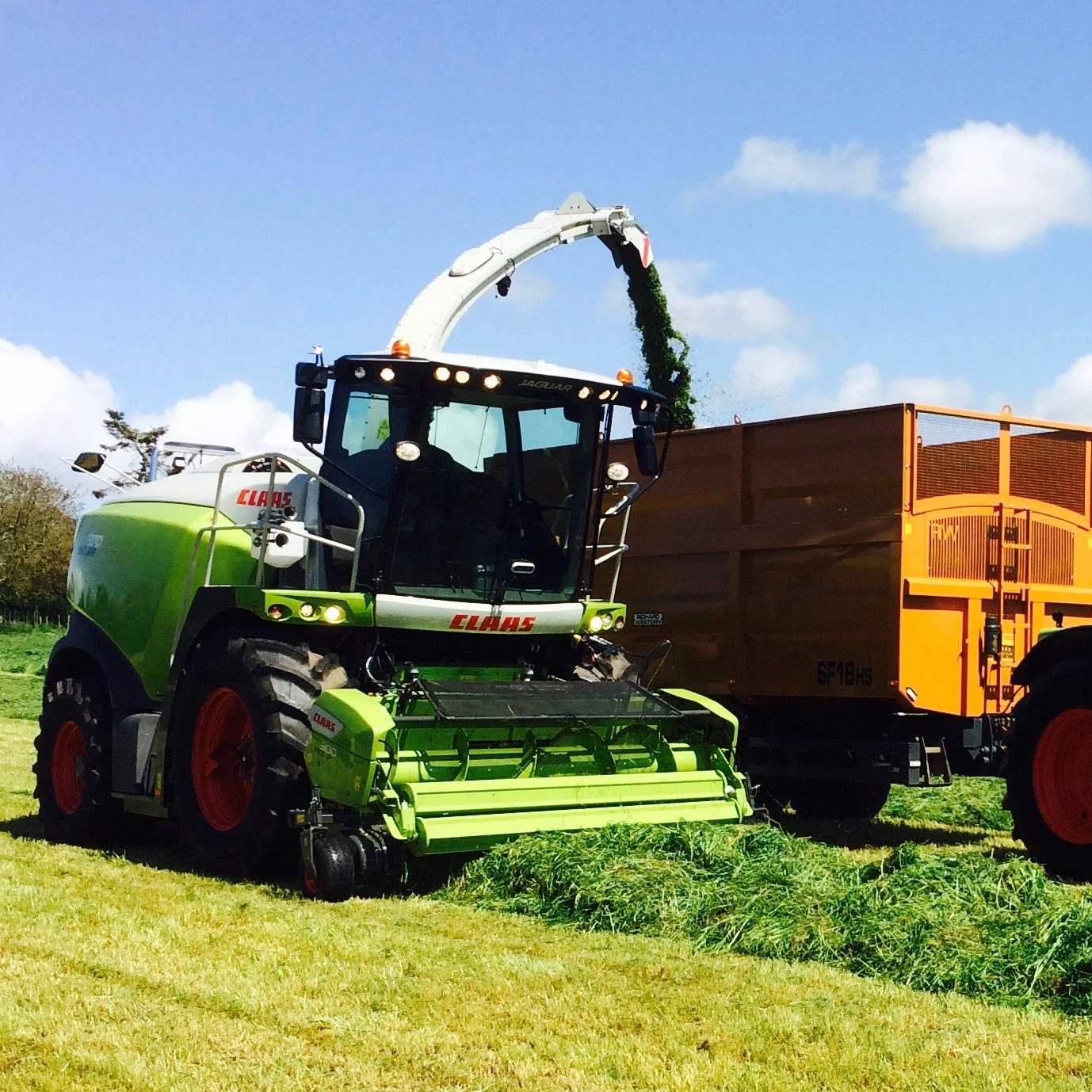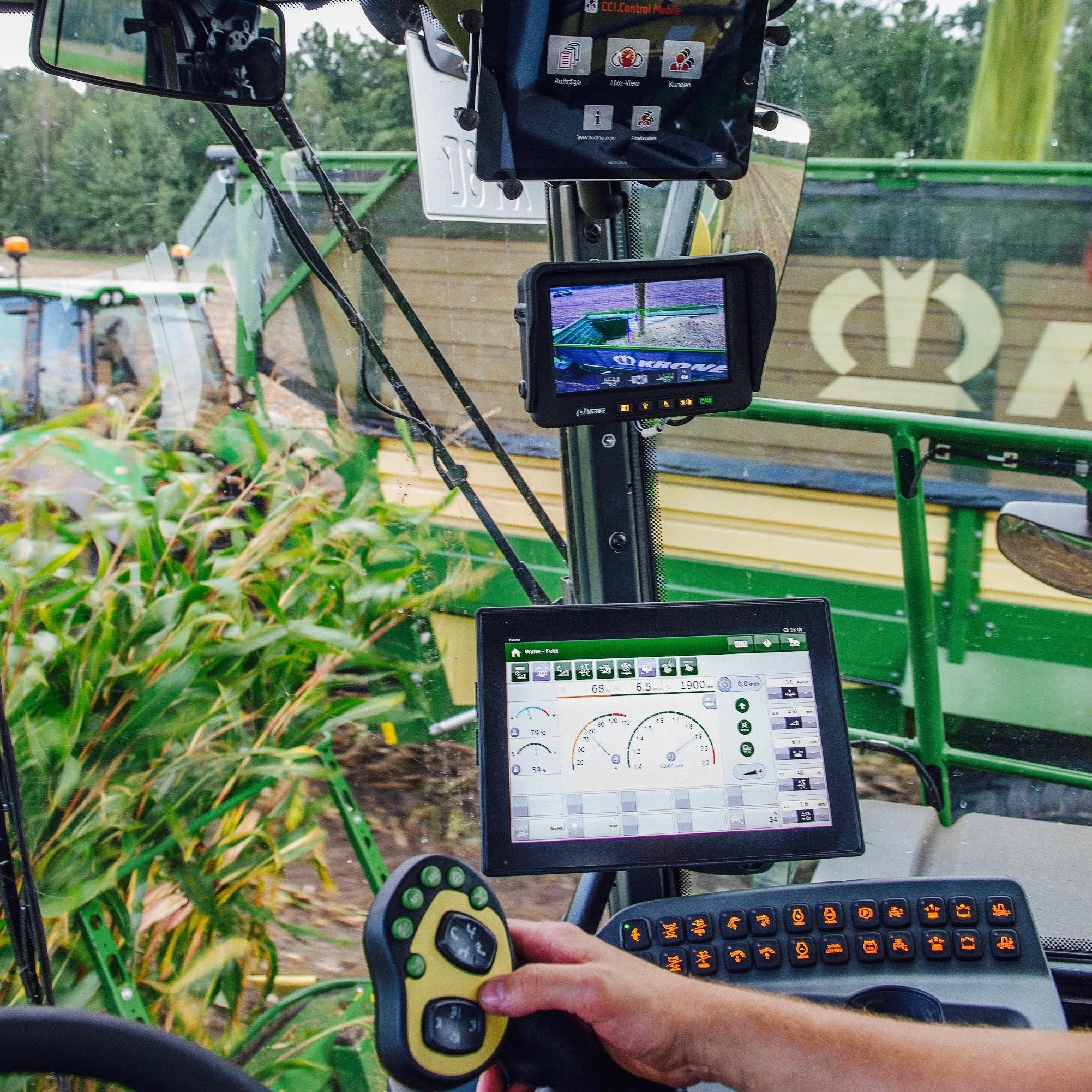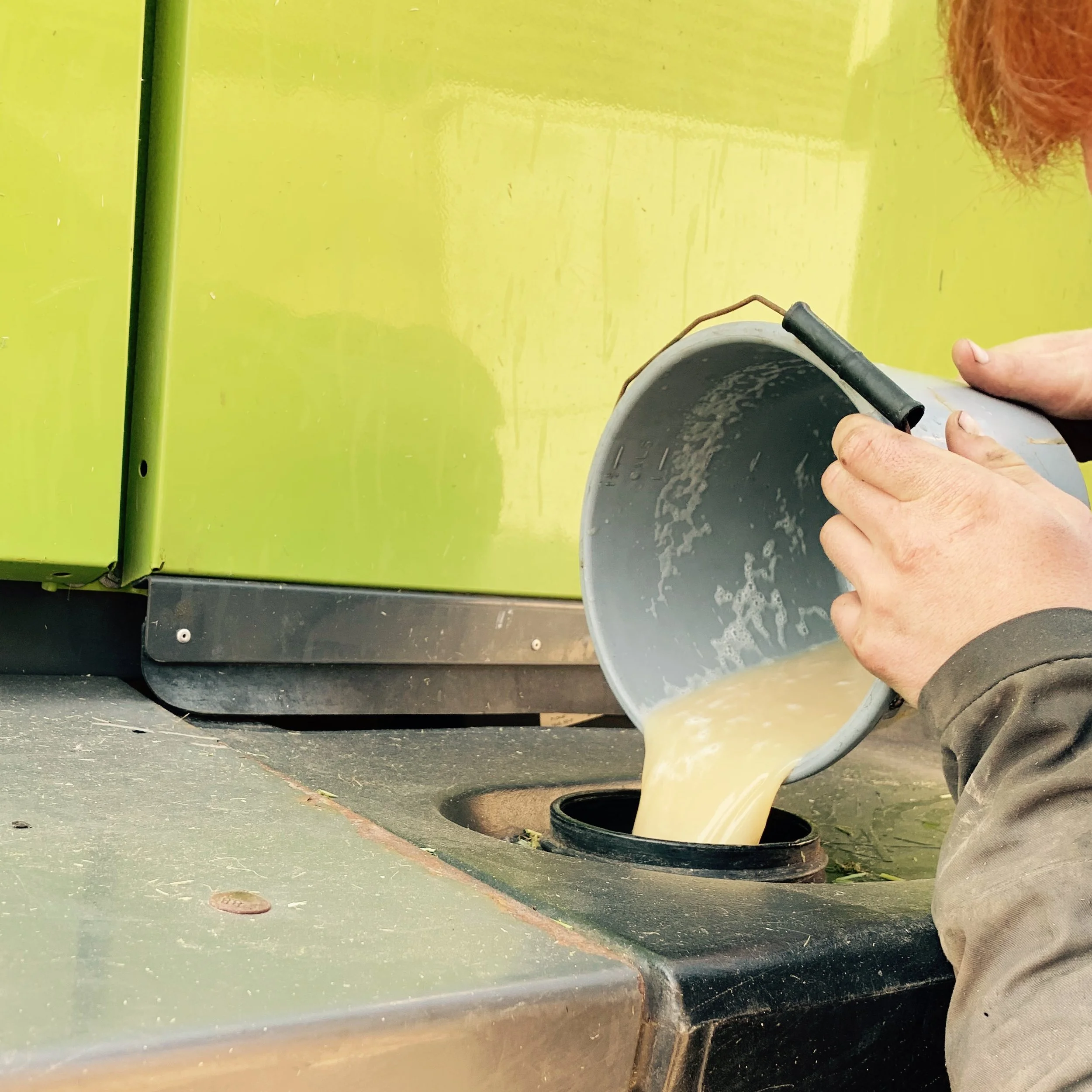How to apply the right amount of silage additive
So you’ve done the technical bit and chosen the best silage additive and you might think you have done the hard bit and paid for it, now you just have to do the practical bit and use it. No doubt there are some helpful instructions, how to store it, how to mix it and so on, but how are you actually going to apply it?
How do you apply silage additive?
Mostly silage additives are inoculants of bacteria and they are usually applied on the harvester, wagon or baler. This hasn’t always been the case and there are some good reasons to apply additives at the clamp but that’s for another time, for now we will concentrate on the application of inoculants on the forage harvester.
In the UK most choppers come with an additive tank and dosing system as standard but that’s not the case in all parts of the world. It is definitely the most convenient solution as the control is usually built into the harvester system enabling the driver to set the dose rate, trigger points and forget it. Forget it until the low level tank warning goes off that is.
Why is it that harvesters never have large enough inoculant tanks?
The size of the inoculant tank is often the output limit for a forage harvester: you will run out of inoculant long before you run out of diesel. So why don’t they fit bigger tanks, surely they could find some more space. Well they probably could but the inoculant needs to be in tiptop condition to make sure you get the biggest bang for your buck.
To keep the inoculant in prime condition we need to control the temperature. Now I am an advocate of pre-mixing inoculants the day (or night) before the forager gets to work and then keeping it at room (or ambient) temperature. The problem with inoculant on the harvester is that temperatures can begin to get a bit too warm. That mighty engine produces a lot of heat and that heat soaks into every element of the machine including the inoculant tank. This can actually start to “cook” the bacteria by denaturing the proteins if it’s left for long enough. So fairly regular tank fills are a good – if inconvenient way of refreshing the inoculant.
Ultra low volume inoculants maybe a sensible solution in conditions where the temperature range experienced by the bacteria is not going to be harmful. This depends on where the tank is mounted on the harvester, the ambient conditions and the time the inoculant spends in the tank. Some manufactures mount the much smaller ULV tank on the periphery of the harvester, such as the Claas Actisiler 37 tank, rather than deep in the bowels meeting the additive much more stable. ULV dosing means more time harvesting and less time re-filling but the accuracy of the application needs to be spot on when the target is just millilitres per tonne not litres per tonne.
How to set the inoculant dosing rate
Firstly you need to decide the target application rate. If it’s a user-friendly product this will be fairly straight forward (at maybe 1 litre per tonne) although there are some very much more complex application rates in some products. If the chopper has on harvester data collection or NIR then setting the rate can be really simple – just dial in application rate per tonne. This is all very well and good, but how many tonnes are there out there? Asking the guy that mowed it, or the guys that rowed it up might give you a clue but it’s not an exact science is it? And then how do you know just how accurate the application system is?
So the operator has to plump for a setting then monitor inoculant use and the tonnes going through the harvester against the amount of ground left to clear. This is going to be affected by the type of crop and growing conditions and if that all sounds like a lot to do on top of driving the chopper and filling trailer then you are right – IT IS. So maybe someone else needs to take that role on and make sure the inoculant is being applied at the target rate.
What does the driver think?
A straw poll of chopper drivers (who may or may not be telling the truth) indicates a couple of schools of thought. Drivers want to make sure all the inoculant is applied to the crop and faced with an unknown amount of crop they either “put a bit too much on at the start” or “hold a bit back to the finish” to make sure it’s all gone at the end.
There is a reasonable argument for both options, and many state that the last loads need plenty of inoculant as these ones are on the top of the clamp and are at most risk of wastage. I’m of the alternative school of thinking; to me the first loads are the most critical. At the start of harvest, you need to establish a dominant bacterial population and the clamp walls, floor, buckrake and tyres will all have “other” unhelpful bacterial populations on them. By the time you get to the end of the day or cut of silage, everything is going to be covered in inoculant, the harvester, the trailers the buckrake the tractor tyres and you – it’s all covered in millions of inoculant bacteria. So to me the last loads are the least important as they will be delivered to the clamp in a soup of good bacteria.
Adding silage inoculant to the harvester
Is applying ULV silage inoculant any easier?
The short answer is no it isn’t, it’s maybe more difficult. The amount of actual inoculant you are applying is the same as standard volume application, it’s just much more concentrated. Get the dose rate a bit wrong and the effects are more pronounced if the concentration rate is ten times higher. Using Ultra Low Volume inoculant will see you spend less time filling the additive tank but a bit more time making sure the additive is getting to where it’s needed. As with just about everything else, if you want to do a good job, you need to pay attention to the details.
If you want to discuss how to better apply silage additive to your silage or want to discuss any of the other aspects of silage making covered in this series – contact Jeremy Nash at Jeremy@silageconsultant.co.uk
Follow The Silage Consultant on social media:



